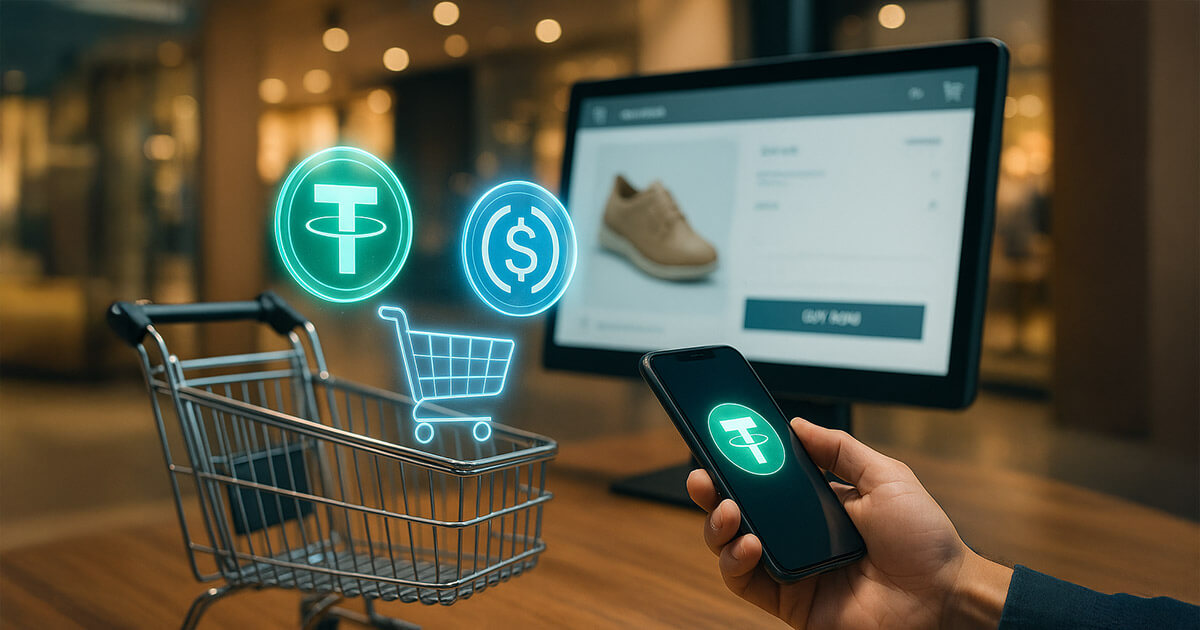The Philippines is a fast growing ecommerce market building its strong structure as a digital hub in Southeast Asia. It’s driven by platforms like Shopee, Lazada and TikTok Shop and is a booming digital first consumer base. With this evolving ecosystem, there’s a recurring problem that every online merchant comes across - the challenge to accept payments from international buyers efficiently. Generally, traditional payment methods like credit cards, PayPal and remittance systems are used but they are slow, expensive and limited by currency restrictions. This is where stablecoins step in - they are digital currencies like USDC and USDT which are pegged to fiat currencies (USD in this case) and offer a plethora of benefits for easing cross border payments. By integrating stablecoin payments, Filipino e-commerce businesses can accept global payments instantly, cut down on fees and expand their reach beyond borders.
What are stablecoins and why do they matter?
Stablecoins are essentially cryptocurrencies designed to have a stable value—usually pegged to fiat currencies like USD, EUR, etc., making them a valuable stand-alone digital asset. Stablecoins combine speed and borderless nature of crypto with the stability of traditional fiat money. Some of the examples include;
- USDT (Tether) - This is the most widely used stablecoin for transactions.
- USDC (Coin) - This is regulated and transparent, it’s highly preferred by businesses.
- BUSD and DAI - These alternatives offer liquidity and blockchain interoperability.
For e-commerce merchants, accepting stablecoins means receiving value in USD equivalent assets from buyers worldwide, without actually worrying about volatility and currency conversion delays.
Benefits of accepting stablecoins for e-commerce businesses in the Philippines
Key advantages include;
- Lower fees - Stablecoin transactions are blockchain based and cost lesser than 1% whereas traditional means like PayPal gateway charges around 4-8%.
- Instant settlements - Stablecoins help to receive funds in minutes to seconds even from buyers operating from overseas.
- Global reach - They help in accepting payments from any buyer with internet access and crypto wallet making them universally accessible. -09
- USD value stability - stablecoins maintain 1:1 parity with USD protecting the value against PHP exchange fluctuations.
- Transparency and security - It’s common knowledge that blockchain based transactions are fully transparent and traceable which means they are secure and tamper-proof.
- Easy integration - They can easily be integrated into businesses via gateways or plugins to add checkout options and payment flexibility for the buyers.
- Seamless conversion - They can be instantly converted to PHP via complaint off-ramp providers or be stored as stablecoin and converted at convenience.
How to setup and accept stablecoins for Online Sales
Filipino e-commerce businesses can start receiving stablecoin payments today by following the easy process;
- Choose a Payment Gateway
Select a crypto friendly checkout solution like TransFi checkouts which supports USDT, USDC and PHP settlements.
- Set up a merchant account
Complete KYC verification to ensure compliance with local and cross border financial guidelines.
- Integrate with your online store
Use API or e-commerce plugins (e.g., Shopify, WooCommerce or custom checkout scripts) to embed crypto payments in your checkout systems.
- Start accepting payments
Display wallet QR codes or wallet addresses for buyers to send stablecoins securely and efficiently.
- Convert and withdraw funds
Instantly off-ramp to PHP whenever needed or keep stablecoins as digital reserves for reinvestments and usage.
Integrating stablecoins with your online store
Ecommerce stores can easily integrate stablecoin payments using gateway APIs or checkout plugin solutions. To integrate checkouts quickly with TransFi, follow the steps;
- Connect your e-commerce backend to TransFi’s payment API.
- Make sure to display payment options with USDC/USDT at checkout.
- Buyer can now pay in stablecoin and the payment is verified on the chain.
- The merchant wallet receives funds instantly.
- Convert the same into PHP or settle in one click.
This setup provides a smooth, end-to-end crypto checkout for local and international buyers with full transaction transparency and clarity at each step.
Common challenges and how to overcome them
Some of the common fallbacks and challenges with adopting stablecoins include;
- Regulatory clarity - Work with licensed providers who fully comply with Bangko Sentral ng Pilipinas (BSP) and cross border guidelines.
- Volatility avoidance - stick to regulated stablecoins such as USDC and USDT instead of other volatile alternatives.
- Technical setup - Partner with the payment gateways which offer easy to adopt plug and play ecommerce integrations.
- Conversion compliance - ensure transparent records and audits for taxation and financial reporting.
The future of stablecoin payments in Philippine
The Philippines is already one of the top global remittance markets and stablecoins are emerging in its economy as the next evolution of digital commerce. As BSP continues to explore crypto regulations and CBDC frameworks, stablecoins can become a core infrastructure for cross border ecommerce, the medium for digital freelancing and the go-to solution for global trade.
Stablecoins are shaping the way for fast, secure and borderless ways to transact with international buyers. By using payment gateways and resources such as TransFi checkouts, merchants can seamlessly integrate their systems with USDC and USDT payments. They can instantly convert them to PHP and ultimately save on global transaction costs. If you are on the lookout for stablecoin payment solutions and assistance, talk to an expert at TransFi and start using TransFi today!
Also read: How Vietnamese Freelancers Can Receive USD Payments via Stablecoins
Frequently asked questions (FAQs)
- What are stablecoins?
Stablecoins are essentially cryptocurrencies designed to have a stable value—usually pegged to fiat currencies like USD, EUR, etc., making them a valuable stand-alone digital asset. Some of the examples include USDT, USDC, and BUSD.
- Is it legal to accept stablecoin payments in the Philippines?
Yes, as long as one uses a licensed provider and comply with BSP’s financial guidelines, they can carry out transactions in stablecoins.
- Which stablecoins are most widely used across ecommerce payments?
USDC and USDT are the most widely used and accepted stablecoins among merchants globally.
- How can I convert stablecoin to PHP?
Stablecoins can be instantly converted to PHP via complaint off-ramp providers or be stored as stablecoin and converted at convenience.
- Is it safe to accept crypto payments?
Totally! Blockchain payments are encrypted end to end, they are verifiable and fraud proof.
目次
推奨記事







.jpeg)



.png)














